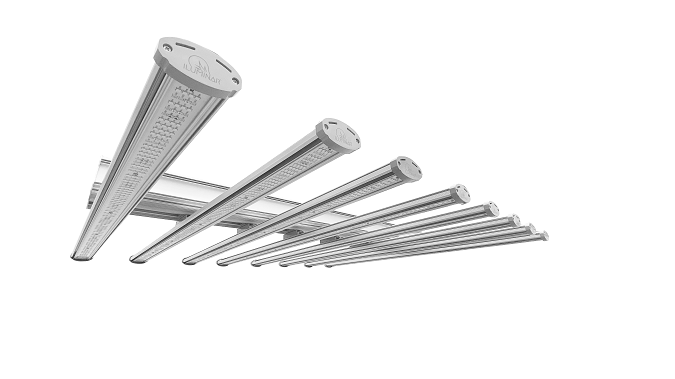Greenhouse growing has always walked a strange tightrope. On one hand, the advanced technology that allows us to regulate internal climates and remove pests makes greenhouses a logical choice for serious growers. On the other hand, lighting experts have been working for decades to develop a grow light that perfectly replicates the beneficial light of the sun, which is freely available to all plants outside. Indoor lighting has been evolving since PAR was coined in the 1960s.

PAR, short for Photosynthetically Active Radiation, is the band of light between 400 and 700 nanometers. This range largely coincides with the light visible by humans. As academic research has progressed, a more specific unit of measurement was developed to test for the efficacy of light in the 400 – 700 nm spectrum. This unit is micromoles of photons per meters squared per second. PAR, for comparison, was measured in watts per meters squared.
Now, if you haven’t taken a physics class in a while, don’t fret. The important takeaway here is that when scientists focused on PAR, they focused on the raw energy produced by the sun as the fuel for photosynthesis. Scientists eventually figured out that it wasn’t the energy that was important, it was the number of photons. The number of photons present between the 400 – 700 nm spectrum is called PPF, or Photosynthetic Photon Flux.
Scientists conducting research on photosynthesis become increasingly granular as to how they measure photons in the 400 – 700 nm range. PPF is now defined as the efficacy of light. In practical terms, PPF is the sum of light emitted from your grow light. PPFD is the measurement of intensity or the concentration of photons that fall on a square meter during 1 second. Again, in practical terms, PPFD is how many photons of light fall on a square meter of your garden over the time period of 1 second.
Of course, the sun doesn’t simply emit light between 400 and 700 nm.
Recent research from Dr. Bruce Bugbee (who has an excellent video summary of the above points) of Utah State University has uncovered evidence that some of the light outside the PAR spectrum has beneficial properties for plants. These photons, which lie past the boundaries of the standard 400 – 700 nm range into the Ultraviolet light and Far Reds expand that range of light used by plants to 380 – 760 nm. So, what does all this research mean for you?
It means your plants will get more of the nutrients they need, which in turn maximizes your yield.
Exposure to UV light throughout the growth cycle increases pest and disease resilience in plants. It’s also been linked to higher essential oil production.
Far-Red exposure has been shown to boost plant biomass and cell expansion. It also increases the absorption of photosynthetic light.
Currently, ILUMINAR Lighting has emerged as one of the front-runners and industry disruptors when it comes to this new wave of LED grow lights. Their new iLogic™8 UV + Far-Red LED combines recent scientific discoveries with ILUMINAR’s time tested design and development of agricultural lighting. ILUMINAR Lighting’s CEO, Shawn Brissette, shared his passion for this new undertaking.
“After seeing firsthand how our new fixtures perform in testing, we’re more excited than ever to bring our latest generation of LED grow lights to market. As growers, we appreciate that light is the driving force behind all plant processes, so any improvement in spectral quality represents a fundamental advantage.”
Shawn Brisette, iluminar ceo
The LED industry is constantly pushing the envelope with new technologies that lead to more quality plants. When the LED industry changes, it is important to stay educated. If you are thinking about jumping into the next generation of grow lights, the first thing is to check if your PAR meter can interpret the expanded light range.
Using an outdated PAR meter with the ILUMINAR iLogic™8 UV + Far-Red LED will result in false PPFD readings.
ePAR is the new standard. It can be measured with the extended range quantum sensor recently developed by Apogee Instruments. An ePAR sensor, as the name implies, extends the current PAR range to 380 – 760 nm.
More information about the ILUMINAR product catalog, customer service, and commitment to grower education can be found iluminarlighting.com.
Joshua Nichols is the MyGardenAndGreenhouse.com associate editor.
Related Articles & Free Email Newsletter
5 Things to Consider Before Purchasing LED Grow Lights
A Beginners Guide to Grow Lights


Comment here